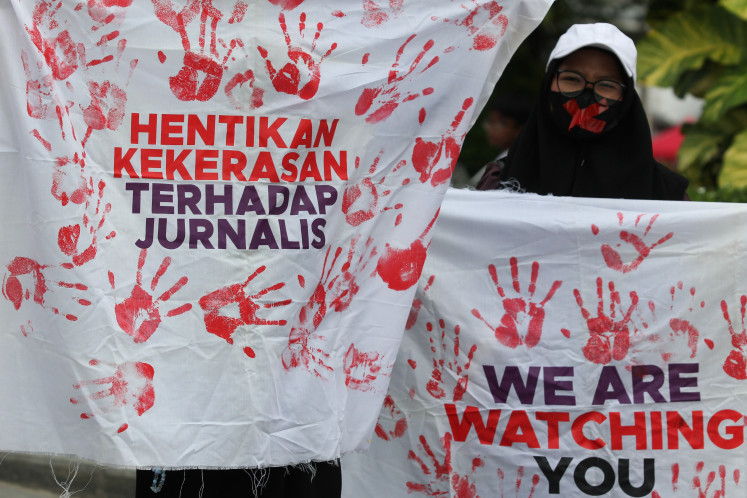Popular Reads
Top Results
Can't find what you're looking for?
View all search resultsPopular Reads
Top Results
Can't find what you're looking for?
View all search resultsSewage treatment in the pipeline
The administration is planning to build a sewage treatment network for the city, and more waste treatment facilities, the governor said on Tuesday
Change text size
Gift Premium Articles
to Anyone
The administration is planning to build a sewage treatment network for the city, and more waste treatment facilities, the governor said on Tuesday.
Jakarta Governor Fauzi Bowo said the administration had developed a plan that would adopt a system currently being used in the Setiabudi area near Jl. HR Rasuna Said, South Jakarta, with a network of ducts and a sewage treatment system dam.
Fauzi said the dam was part of the Kuningan area sewage network. It was a pilot project that should have been developed further, but funding had been insufficient at the time of its construction.
“Our cash flow had not been that strong since we were allocating funding to other public services,” Fauzi said.
“We are considering dividing the network into separate clusters,” he said. Each cluster would have its own treatment plant.
“We mulled over this idea some years ago, and there was a plan from Malaysia that used water tanks. But this is not that simple. Those water tanks need to be supported by a network of ducts.”
Fauzi said the administration planned to build open ducts.
“And while this is not really an extraordinary system, the cost is huge.
“It costs more to remove sewage than it does to supply drinking water. I think it will cost more than Rp 1 trillion. We need investors.”
Fauzi said the administration also planned to charge residents for the use of the system. The charge would be billed along with tap water fees.
Fauzi said this billing system was common in developed countries.
“If bills are separated, the public will not want to pay for the removal of sewage,” he said.
The latest data shows that only 3 percent of Jakarta’s population is connected to proper sewage facilities.
The capital has only one sewage treatment plant in Setiabudi, South Jakarta, and waste treatment facilities in Pulo Gebang, East Jakarta, and Duri Kosambi, West Jakarta.
Public Works Ministry data shows that in 2008 there were 1,460,079 households (63.4 percent of those in Greater Jakarta), which disposed of their sewage waste into closed gutters; 784,568 households or 34 percent dumped their waste into open gutters; and 56,139 households flushed their waste directly into the ground or into rivers.
Most gutters, however, are not connected to sewage treatment plants, but to waterways, thus causing massive pollution problems in the city’s 13 major rivers.
Household waste from toilets, ammonia, BOD (biological oxygen demand) and COD (chemical oxygen demand), have been flushed into these rivers.
A 2008 academic study of an environment ministry plan to control the contamination of the Ciliwung river revealed levels of BOD, COD, and coli bacteria in the Ciliwung river surpassed contamination thresholds, as revealed by Kompas newspaper. (iwp)










